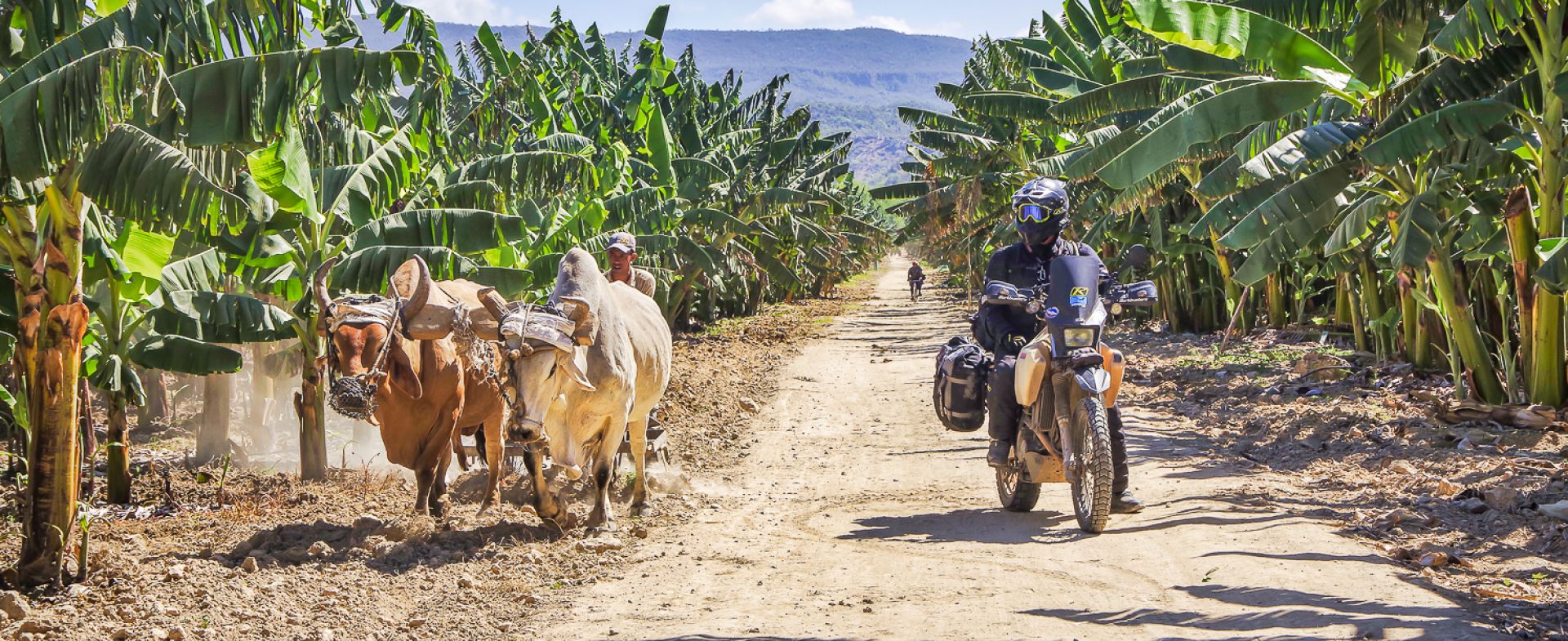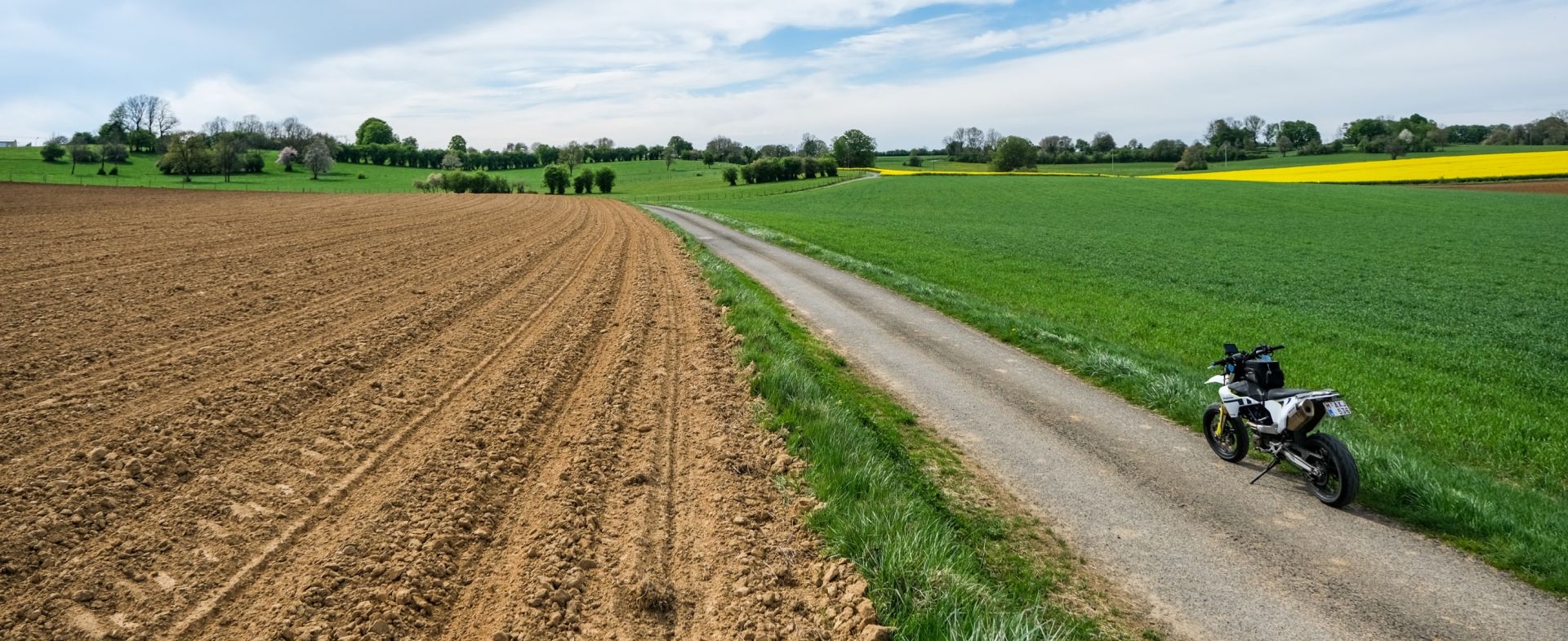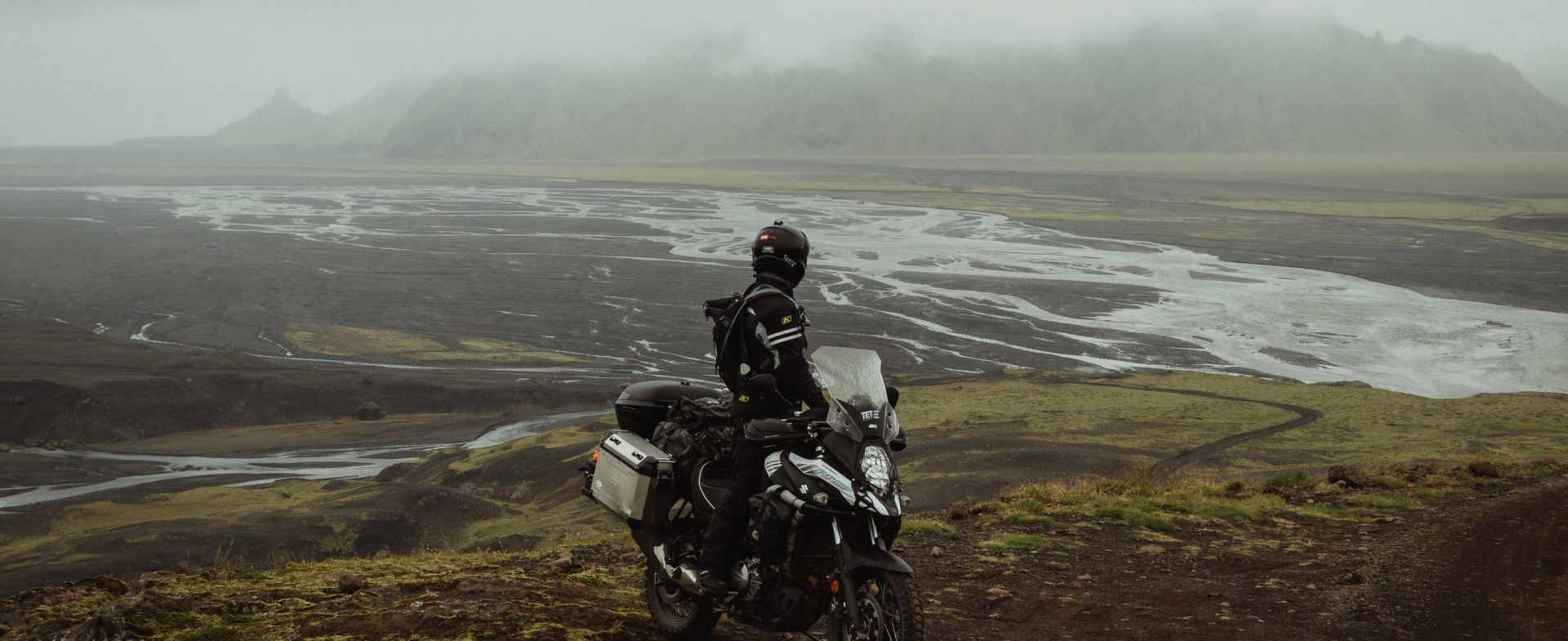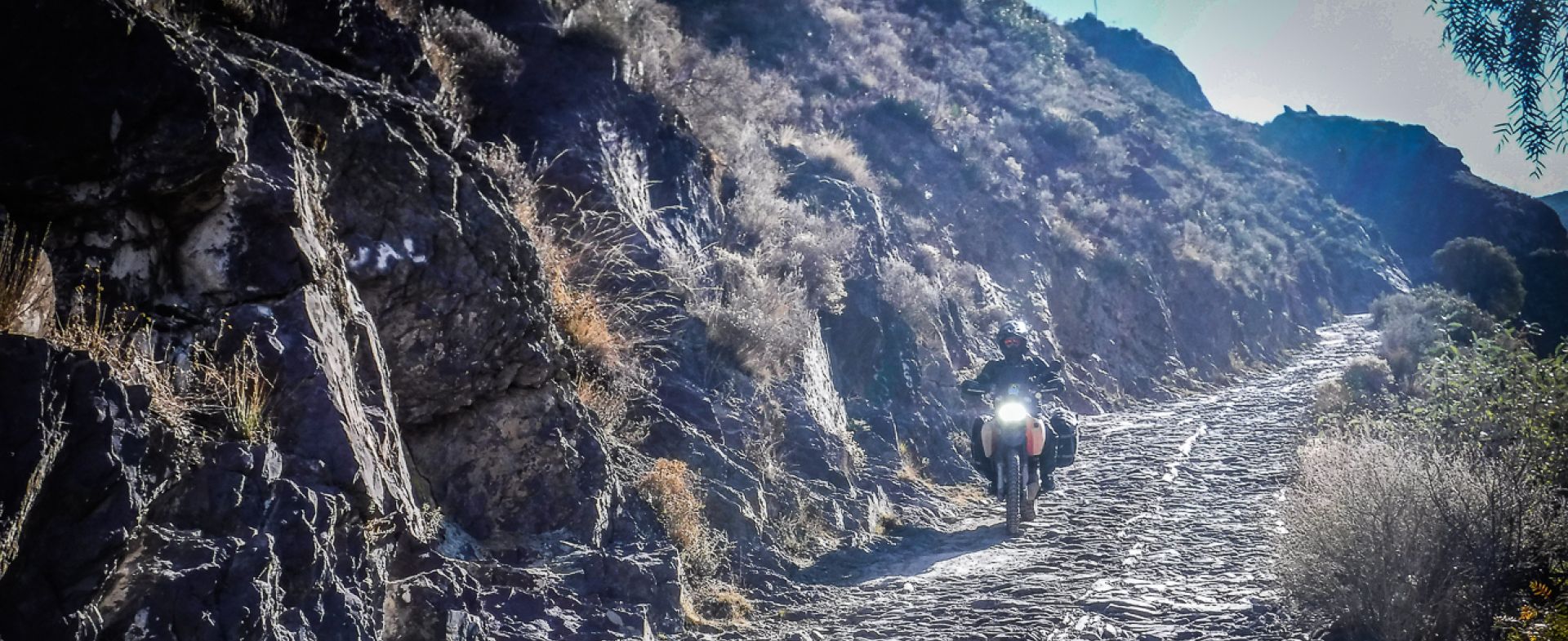Cuba, not a destination that many people think of, for riding their own motorcycle. Even though its only 100km from the US it is one of the harder places on the planet to get your own motorcycle to and from, and even though the US is just over the horizon, it will not ship from there.
Round-The-World-Paul: Cuba
Motorcycle Diaries
As the boat slowly drifted into Cienfuegos harbor, it all seemed too familiar, I had made the decision to ride Cuba in 2016 and it was so good, but time was short, I decided to do it again in 2018.
Logistically getting there you will have to travel from Latin America or Europe with your motorcycle on a specialist ship that will bring you along as open freight, or in a shipping container with a group of other riders. It is worth the logistical headaches because the experience is like no other.
Cubans have to be some of the friendliest and hospitable people you will ever meet and their country has some amazing natural and man-made wonders to see.
The things most travelers wonder about when entering a new country, accommodations, fuel and food and its no different for Cuba.
Travel is simple, accommodation is everywhere in the form of ‘Casa Particulars’ – homestays, and cheap, usually in the range of $20-30 per night and quite often include a very substantial breakfast with enough food you can make a packed lunch from what is left.
Fuel stations are plentiful and 95 octane is available in most of the more populated areas and is about $1.20 a liter. Food can be absolutely incredible but might take a little searching out, ask the locals and they will take you to places you might never have found if you hadn’t asked.
The island has a landmass just a little smaller than Greece so there is a lot to see, and big distances to ride.
Most people would arrive with a motorcycle into the ports of Havana, Cienfuegos or Santiago de Cuba, expect a day to do the clearance of your motorcycle and be official, it ill need to be inspected, and issued a Cuban license plate, an official import sticker and a driving license for you (no test required) and then you’re off.
A few days in Havana and its stark beauty with the majority of buildings in complete disarray you’ll meet people who are very proud and genuine with a great sense of humor.
A ride west to Pinar del Rio, riding through sugarcane fields, on tracks of red dirt to a town that makes cigars and comes out at night to play music in the streets.
Snaking down the island stopping in little towns along the way where the tourists never come to, this is the freedom of having your motorcycle here. The roads are challenging at all, there is a mix of dirt and paved roads that generally are in need of repair and doing a slalom around thousands of potholes is better to make a fun game of than getting annoyed.
The local drivers, few that there are, are slow, vehicles are in poor condition, many from the ’50s and held together any possible way they can with a cocktail of parts from the US, China, Russia and Europe.
To the highlight of riding in Cuba, its southern third, Baracoa is a great place to head to. It was first visited by Admiral Christopher Columbus on November 27, 1492, sadly now a little run down but the roads onward from here are nothing but spectacular.
Red dirt than will stain your gear and bike and give you memories for years to come are a highlight. Locals on bicycles want to talk to you everywhere you go and ask how you got here. Young men will look at the bike in awe having never had the opportunity to see a bike like your (regardless of what it is) so close and be able to touch it to make sure it's actually real.
Be willing to stop and chat, and be prepared for your motorcycle to become the star of the show, everyone that can want to get a photo, and they will ask you very politely if it's ok if they do so.
The road from Baracoa to Tortuguilla is a great mountain paved road, with a sweeping view down to plantations with the crystal clear blue sea as the ever-present background.
Closer to sea level you ride through massive plantations of banana and plantains all being worked by hand and the workers want to stop for a moment or two from leading ox-drawn plows and say hello and thank you for coming to the island.
Approaching the Caribbean the road quickly deteriorates but you need to embrace it and you will ride along stretches of dirt a meter or two from crashing waves and occasionally have to time everything right not to get caught by the surf.
The population dwindles the further you ride along the southern coast, but the friendliness of the people continues. Small shacks occasionally come into view next to the crystal clear water. Stopping you are offered fresh fish to take with you or be cooked there. Coconuts and other fruit are pennies to buy.
A good tip as you would ride from tourist areas is to have both currencies, the Tourist (CUC) and the National (CUP). In smaller areas, they don’t have many tourists so the CUP is all they use, without it you could struggle to buy anything because they simply don’t have the change.
Helpful tips for riding in Cuba
What I found that might make your trip to Cuba easier…
· $1 = 1CUC (Cuban convertible peso)
· $1 = 25CUP (Cuban peso)
· Bring Euros or Mexican Pesos for the best exchange rate; not dollars as you get hit with an additional 10% fee on top of the exchange rate
· Your ATM card most likely won’t work here unless you get special clearance
· Your Visa/ MasterCard/ Amex will definitely not work as they are blocked by the US companies
· Download open source maps for Cuba (free) they were 100% accurate and bringing a GPS wasn’t even questioned…in 2013 they weren’t allowed
· Have a range of at least 250km
· Learn how to say full (lleno or completo) at gas stations, this way you go tell them lleno, fill up then pay, otherwise, you have to play the guessing game of how much or how many liters
· If you are asked ‘effectivo’ they are asking if you are paying in cash…si (yes) is an obvious answer, they will then tell you a pump number, hopefully, the one your bike is next to!!!
· Gas is available in liters: 83 octane (0.80CUC), 90 octane (1.00CUC) and 94 octane (1.20)…we used mainly 94 which is called especial and look for a blue sticker on the pump
· Gas prices are regulated by the government because they own the gas stations (similar to Pemex in Mexico) so the price is the same everywhere
· The gas station sign is a green oval shape, “CUPET” Cuba Petroleum
· In small towns sometimes they only have 83 octane…hence the 250km range so not to use this low octane
· As soon as possible get some ‘nationals/ CUP’ you can get them from a Cadeca (currency exchange)
· Learn the difference in the money, some bills look very similar especially the 3 CUC and 3 CUP bill, both are red and both have Ché on them…that’s almost a $3 switch if you get caught out
· If you want snacks, look for small handwritten/ painted ‘pizza’ signs, most have a selection of food and small pizzas start at 5CUP (20¢ US) some do sandwiches, this is like empanada joints in the rest of Latin America…good cheap snack food
· Guys on bikes selling donuts, I got three donuts for around 8¢ US
· Ride every road even the freeway like you are riding dirt (basically concentrate), potholes and bad conditions are everywhere
· Roads are fixed (potholes) with an oil and chip mixture, you can usually smell it before you see it. A pile is put in a hole and NOT flattened, they let the cars do the flattening, mostly it is a light gray or beige color…very dangerous if it was just laid…saw this everywhere
· Train tracks…you must stop and every Cuban will 100% of the time…remember no brake lights most of the time, so look for a sign with an old steam train, that’s your clue it's coming up
· In towns speed limits are 40 or 50kph… don't speed, too many people just walk out, they have no idea what a big bike is…literally
· Expect a large crowd every time you stop anywhere, and the most asked question “what’s the top speed”
· If it rains go slow in the bends, some of the roads here are so worn the surface is like glass
· At the Cadeca read your receipt, at one I had the lady (government employee) try and stiff me just for around $3 but if she can get away with it once a day she has tripled her monthly salary. The trick is they give you a selection of bills, count them out very quickly and then leave 3-5 CUC off, this they have in their hand in coins, you grab the bills walk away she pockets the difference. I questioned it and she opened her hand and right there was 3.60 CUC in coins…BTW you need your passport for every transaction
· 15-35 CUC ($15-35) is the standard rate for a casa particular, location or quality doesn’t seem to have any bearing on the price, try negotiating, sometimes it works
· Get the breakfast, its huge, and at every place, we had enough to make sandwiches for lunch…an easy way to save some cash
· Food on the road is NOT always easy to find, in smaller areas most Cubans don’t have spare money so stores and restaurants just don’t exist…hence the comment above
· Lights on in Cuba in the day time means you have an injured person and are taking them to hospital, so everyone gets out of your way and literally pull off the road to let you pass from either direction
· I was told the food here is bad, really bad, no flavor just bland…WOW how wrong this is, never had one bad meal
· Cuba is now the 85th county I have traveled thru and has to be one of the easiest, accommodation is everywhere, casa particulars are everywhere in bigger towns and cities…if you don’t find one just ask as everyone knows where they are. If it's not what you want/ like tell the owners, they help each other out and will do everything they can to find exactly what you need
· 3 weeks is really not enough time but make the most of it, I traveled to 15 of the 16 provinces, (16th is an island off the west coast) hit all the major towns and cities, all the best spots and never did a day over 400km/ 250 miles, also never arrived later than 4 pm anywhere
· If I was to come solo on a more dirt oriented bike the areas I would head for are around Trinidad and around Santiago to Bayamo along the coast, lots of mountains and dirt tracks were everywhere and all shown on the GPS maps
· If you want wifi then you need a card 2CUC ($2) for 1 hour but you have to find a hotspot…just look for crowds of people at a big building in the center of cities and towns, sometimes in main squares, …you’ll understand when you see it...WIFI is really, really bad quality
· Most photogenic place (towns) – Trinidad and Havana
· Most photogenic place (scenery) – Vinales and Santiago to Bayamo along the coast
· Worst road (potholes)– Moa to Baracoa
· Best road for scenery (beaches) – Baracoa to Santiago and Santiago to Bayamo
· Best road for scenery (mountains) around Vinales, Santiago and Trinidad
· Friendliest place (people on the streets/ locals) – everywhere but Santiago
· Most dangerous place - Santiago
· Most expensive place – Havana
· Most modern feel – Camaguey/Varadero
· Nicest beaches I saw– Varadero, Cayo Coco and Guardalavaca area, there are a lot more but I didn’t get to them, it wasn’t a priority
· Cleanest place – Varadero and Sancti Spiritus
· Best place to see good quality old cars – by the Capitol building in Havana, parked or on the Malecon around Havana driving


































